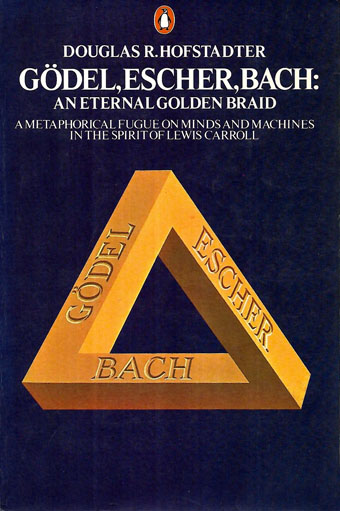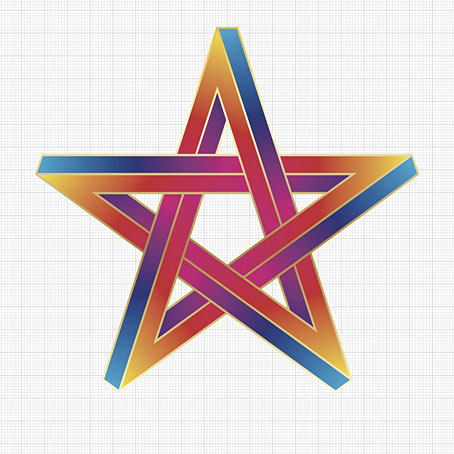
A classic text although that cover art always looks a little off. I’m sure MC Escher would have insisted on the triangle being equilateral.
Most people are familiar with the Penrose triangle by sight even if they don’t know who “Penrose” was. (Psychiatrist Lionel, together with his son, Roger, the celebrated mathematician and physicist.) I’ve been playing with these things for years, most notably on the cover art I created for Zones by Hawkwind, although the triangle also formed the basis for the robot pathways I created a couple of years ago when illustrating Bruce Sterling’s Robot Artists and Black Swans.

Earlier this week it occurred to me that I hadn’t tried applying the Penrose effect to a pentagram. For a fleeting moment I thought the idea might be a novel one but a quick web search disabused me of this; plenty of similar examples exist already. Here it is anyway, after 20 minutes or so in Illustrator. I’m tempted to try a few more things like this when I have the time. Many possibilities present themselves.
Previously on { feuilleton }
• More Swans and Robots

One of the interesting thing about the inter-tubes is that when one’s struck by an idea one thinks is unique, someone (or more) has already had it and there it is.
(The flip side of that, of course, is the sense that one can find everything on the web and that is not so.)
I like that star, though, anyway.
Thanks. The availability of everything is useful most of the time, it means you can find out very quickly if someone has already explored an avenue you’re thinking of following yourself. The Penrose triangle is actually a case in point: Oscar Reutersvärd had invented something similar in the 1930s but the Penroses weren’t aware of this when they created their triangle.